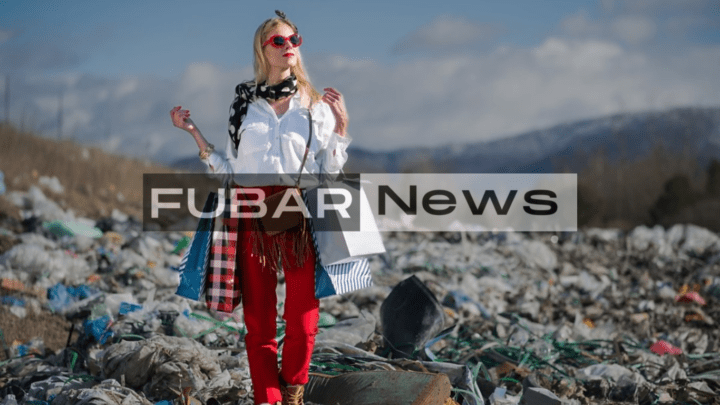In the world of fashion, trends change faster than you can say “runway.” But there’s a darker side that often goes unnoticed—the rise of fast fashion. While consumers might believe this sounds good, with lower prices and plenty of choices, it can lead to bad environmental consequences. Let’s peel back the layers to understand how the quest for trendy clothing is leaving a significant mark on our planet.
Environmental Consequences
Many people choose to blissfully ignore the damage fast fashion is doing to the environment. But, when you hear about it and educate yourself on what’s happening, it can allow you to make changes.
Resource Depletion
Picture the vast cotton fields and manufacturing plants consuming unimaginable amounts of water, energy, and raw materials. From cultivating crops to powering factories, the fashion industry places an enormous strain on our planet’s resources. This depletion contributes to environmental degradation and raises questions about the sustainability of current practices.
Pollution
The fashion industry’s vibrant palette has a hidden cost—pollution. Chemical dyes, synthetic fabrics, and manufacturing processes contribute to water, air, and soil pollution. Vibrant colors come at the expense of environmental health. Understanding the colorful yet toxic reality of fashion’s impact on our environment is crucial for making informed choices as consumers.
Waste Generation
Fast fashion operates on a throwaway mentality, leading to a staggering volume of textile waste. Discarded clothes, often still in wearable condition, pile up in landfills, contributing to the global waste crisis. Unraveling the challenges of recycling and addressing the root causes of excessive waste is a crucial step toward a more sustainable future.
The Rise of Conscious Consumerism
Amidst the challenges, a silver lining emerges—the rise of conscious consumerism. More individuals are re-evaluating their shopping habits and demanding transparency from the brands they support.
Sustainable Alternatives
In the realm of fashion, sustainability is not just a buzzword but a guiding principle for change. Discovering brands that embrace eco-friendly fabrics, ethical production methods, and sustainable practices showcases a brighter side to the industry. These alternatives provide consumers with the power to support a more sustainable and ethical fashion landscape.
For example, Luxeire is one of these brands. They’re offering eco-friendly Italian technical fabrics as part of their designs. This can offer you quality and longevity for your wardrobe. Thus, you can stay away from fast fashion and feel good about your clothing choices.
The Benefits of Sustainable Clothing
Helping the environment is definitely an advantage of sustainable clothing purchases. But, you should also know that there are benefits you can enjoy.
Durability
You’ll find that a lot of sustainable clothing is designed with durability in mind. It’s not mass-produced like fast fashion, with a focus on selecting functional materials. Yes, they can cost more money. But, they can also be less likely to be replaced anytime soon.
Non-Toxic
Did you know that there can be some toxic materials used in the making of fast fashion pieces? We’re talking about chemicals that could be bad for your health. Thankfully, there is less likely to be a problem with sustainable items. There’s a focus on using quality materials that aren’t harmful to you or the environment.
Timeless Fashion
Fast fashion is all about following the latest trends that come and go. But, this isn’t what you always want. Some timeless pieces are always going to be fashionable, which are the ones you want to have in your wardrobe. This way, you’re never behind the times. This is exactly what sustainable clothing aims to do. It’s going to achieve timeless designs that you always want to wear. It won’t be unpopular next month, and you can know that you’re always on-trend, whether you’re dressing professionally for the office or meeting your friends on the weekend.
What is Fast Fashion?
Have you gone through this article and are still not really use what fast fashion is? Imagine a magician continuously pulling rabbits out of hats, but instead of bunnies, it’s an endless stream of inexpensive clothing hitting the shelves. Fast fashion is characterized by rapid production cycles, constant trend turnover, and an insatiable appetite for the latest looks. However, this magical show comes with a hefty environmental price tag that often goes unnoticed.
Conclusion
As the curtain falls on our exploration of the impact of fast fashion, remember that your choices matter. The fashion industry is undergoing a transformation, and you play a vital role in influencing that change. Let’s embrace a future where style and sustainability walk hand in hand, and where fashion becomes a force for positive environmental and social impact.


